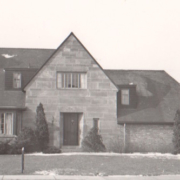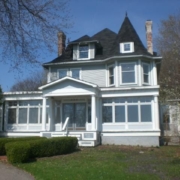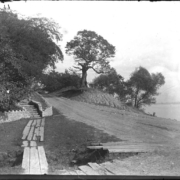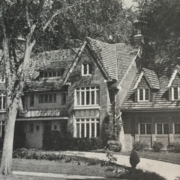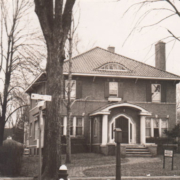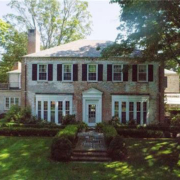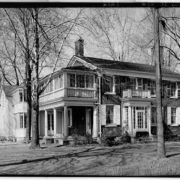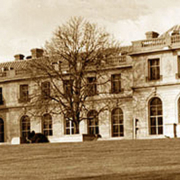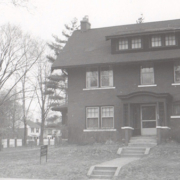Historical Architecture of Grosse Pointe –Leonard B. Willeke – A Career of Highs and Lows – Part 2: Coming Back
Part two of the Leonard Willeke story, a career of highs and lows, continues with the architect’s career in 1930 – the financial devastation Willeke suffered from the Great Depression, and how he reestablished his career.
The 1930’s
Having experienced the ultimate high, during the 1920’s, of working with clients such as Henry and Edsel B. Ford, Oscar Webber and William A. Petzold, building many prestigious homes in and around the community Willeke’s income in 1930 was only half that of the previous year, and he was virtually without income during the following three years. Source: Heritage Magazine, 1987.
Willeke’s financial plight in 1932 resulted in him leaving the large home at 1100 Berkshire – he had built for his family in 1922 – and moving to a small apartment on Village Lane. Having weathered the worst of the financial storm Willeke, 1934, began to receive some small remodeling jobs, followed by a commission from attorney Henry C. Bogle for a new home – 433 Lakeland.
Despite his dip in fortunes, Willeke had lost none of his architectural flare. The formal brickwork of 433 Lakeland makes for a classic design, while the irregularly cut shingles provide an interesting design element.
As the 1930’s progressed, so too did the number of commissions Willeke received, including:
- 1154 Grayton Road
- 195 McKinley Road
- 1251 Harvard Road
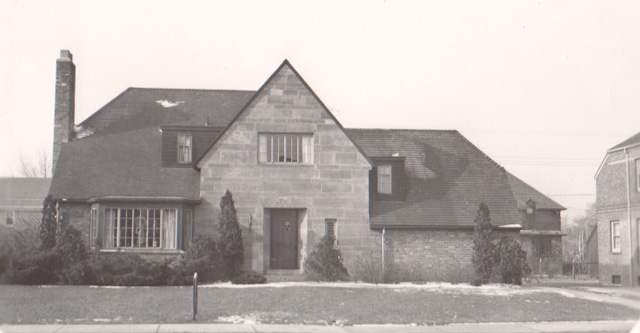
- 1011 Harvard Road
- 563 Fisher Road
- 1036 Berkshire Road
- 1027 Buckingham Road (razed)
- 806 Three Mile Drive

806 Three Mile Drive – courtesy of www.estately.com
- 1142 Audubon
Willeke also built himself a new home and studio on Bishop Road.
Despite working on smaller commissions with tighter budget constraints it is believed Willeke’s enthusiasm did not diminish at all. He created homes across a broad architectural spectrum, from Colonial through to a typical English Cottage style, adding his own fresh and innovative detailed elements to his projects.
His skill for creating something different was based on his natural talent for design, and was enhanced from his time spent in Europe during the early years of his career. Having travelled extensively through Western Europe at the beginning of the 20th Century Willeke amassed a collection of observations, postcards, photographs and sketches from his travels. It is believed Willeke returned to the United States in 1910 with a collection of over 8,000 postcards, twenty-seven bound volumes of photographs, sketchbooks, journals and books that filled four crates. Source: www.lib.umich.edu/
You can view an online exhibit entitled the ‘Leonard B. Willeke Postcards’ by clicking here.
“…an Architect must be an artist and … painting, music, poetry, sculpture, etc. must be studied by him in order to educate all artistic senses which are expressed in his work.” – Leonard B. Willeke Excellence in Architecture and Design
The 1940’s
As an accomplished all round designer Willeke, in the 1940’s, turned his attention to Landscape design. Having already designed the garden at 745 Balfour (in 1927) Willeke went on to work on several prestigious projects in Grosse Pointe.
Through research compiled by Thomas Brunk * we understand Willeke worked in collaboration with Landscape architect F. Bruce Winkworth on several Grosse Pointe projects. This included – designing the gardens and a fountain at 226 Provincial, adapting an antique wellhead into a fountain at 114 Lothrop, along with creating an elaborate rose garden and terrace with a fountain at 315 Washington Road.
The 1950’s
During the final years of his career Willeke adapted his style once more, creating four speculative ranch homes on Vernier Road – house numbers 844 and 854 still exist – along with creating a ranch home on Stephens Road, Grosse Pointe Farms.
1951 marked the end of his professional career. Throughout his retirement Willeke continued to express the same enthusiasm for design as he had displayed during his extensive career. He died aged 86, in July 1970. According to Thomas Brunk ‘his passing was virtually unnoticed by the architectural profession’.
Willeke’s creativity, passion and talent were only fully recognized in the 1980’s. He was an outstanding individual with an enthusiasm to create wonderful designs for clients with varying financial constraints. In 1984, Grosse Pointe Park opened a gazebo in Patterson Park. The structure was designed in honor of Willeke and his wife (residents of Grosse Pointe for over 50 years), and in recognition of his work and the contributions he had made to the local community.

Gazebo – Image Courtesy of Deviant Art: toshema.deviantart.com/art/Gazebo-Stock-251400909
Research from Thomas Brunk states that after Mrs. Willeke’s death in 1981, her husbands architectural library of more than four hundred volumes and 2,600 photographs was donated to the University of Michigan College of Art and Architecture Library to form the ‘Willeke Collection’. In 1983 the University of Michigan (Taubman College) also created an annual Willeke Design Prize, to promote excellence and innovation in architectural design.
Leonard B. Willeke’s career may have had its high’s and lows, but his skill, appreciation, enthusiasm and love of design didn’t diminish, and thankfully his architectural contribution to Grosse Pointe can still be seen today – receiving the recognition he thoroughly deserves.
* Thomas Brunk is the author of – ‘Leonard B. Willeke: Excellence in Architecture and Design’.
*Photos courtesy of the Higbie Maxon Agney archives unless stated.
Written by Katie Doelle
Copyright © 2016 Katie Doelle

